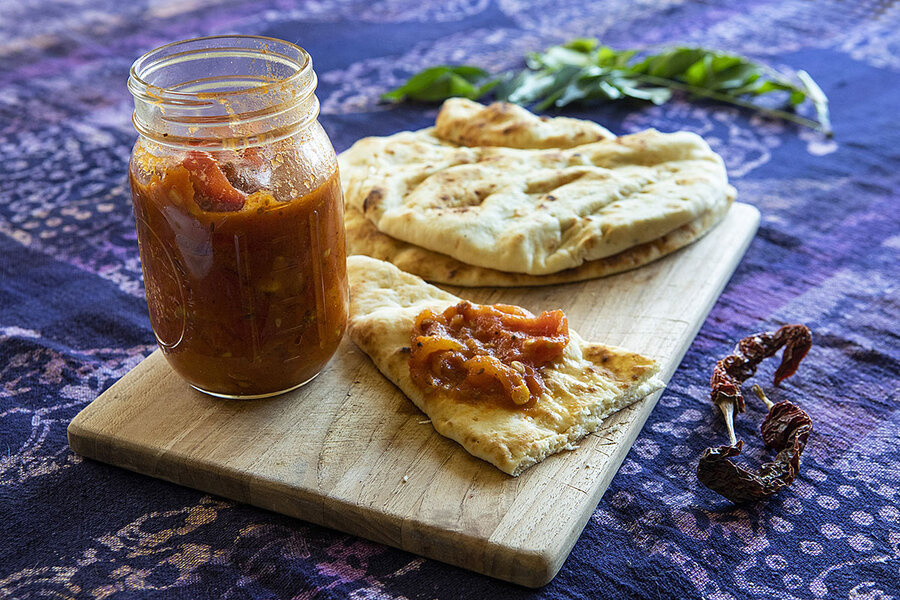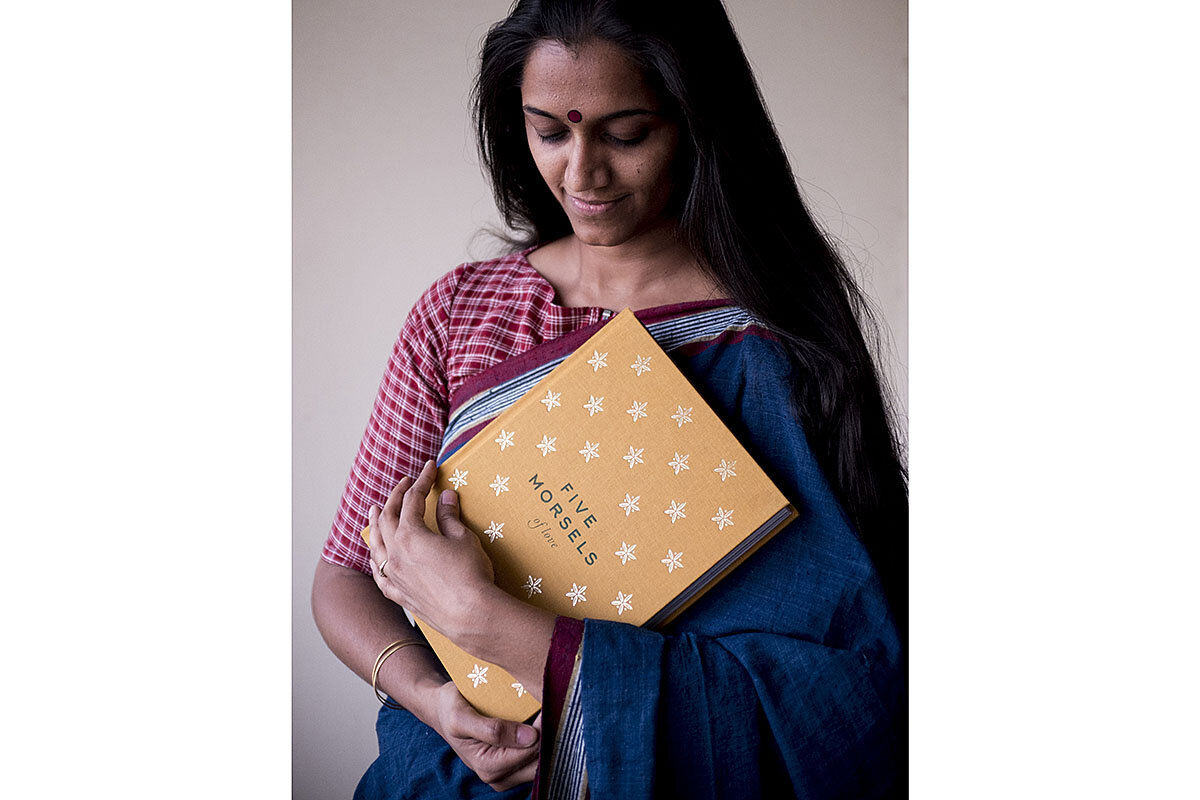New generation of cooks lifts lid on India’s diverse cuisine
Loading...
When I got married a couple of decades ago in the south Indian city of Chennai, my aunt gave me a cookbook on traditional vegetarian Tamil cooking. “Samaithu Paar” (“Cook and See”) by Meenakshi Ammal, first published in 1951, was still considered a go-to guide for any young Indian bride. I found myself often opening the book to rustle up simple meals, including staple stews like lentil-based sambar and the tangy-spicy rasam.
“Cook and See” is just one of several community cookbooks from the decades when modern life began to displace multiple generations of women sharing the kitchen and dispensing wisdom as they prepared family meals. Through these books, the authors offered glimpses into their lives. For example, “Time & Talents Club Recipe Book” (1935) – packed with 2,000 recipes by a variety of contributors, sold as a fundraiser, and republished six times – is still held as the beacon for Parsi cooking, a meat-rich cuisine shaped by influences from Persia, where the community comes from, and from Gujarat, the Indian state they first called home in India. “Rasachandrika” (1943) by Ambabai Samsi featured recipes from the Saraswat Brahmin community on the western Konkan coast.
These cookbooks by homemakers for homemakers were compilations of not only recipes but also practical information – from essential cooking to festival rituals and home remedies for common ailments. Each community in India had, and still has, its own unique ingredients, techniques, recipes, and eating rituals, and these collections ensured this knowledge was passed down through the generations.
Why We Wrote This
Too often, “Indian food” is portrayed as one cuisine. In reality, it’s dozens. Recent cookbooks are rediscovering and celebrating that heritage, preserving wisdom and identity traditionally passed down in the kitchen.
Somewhere in the late 1980s, however, Indian cuisine began to be seen and represented globally and nationally as one homogeneous curried red mass. Perhaps it was because the flavors of garlic naan and chicken tikka masala (a dish most Indians have never heard of) traveled well across continents and palates, or perhaps because the Punjabi people successfully managed to showcase their cuisine wherever they went. But the result was that representations of Indian food were cleaved into two neat south and north divisions as far as restaurant cooking was concerned. Regional cuisines and their cookbooks began to be relegated to the kitchens of more discerning home chefs or they were carried abroad by Indian students dreaming of their mother’s culinary creations.
But regional Indian cuisine is being rediscovered and celebrated once again through trendy pop-up brunches and specialty restaurants. More important, a growing number of regional cookbook writers are publishing new cookbooks, complete with easy but largely unknown recipes and glossy photographs highlighting regional spices, legumes, millets, oils, and grains.
“We have begun looking inwards rather than taking our cues from the West on what to eat,” says food writer Rushina Munshaw Ghildiyal, referring to the recent Indian craze for kale and quinoa. “Now many of us are interested again in local ingredients, and are curious about how other people in our country eat.” And like their predecessors, these books offer glimpses of hidden cultures – culinary and otherwise – to a larger audience.
Take for instance, Lathika George’s book “The Suriani Kitchen” (2009). It is a rich repository of recipes from the small community of Syrian Christians in Kerala, whose cuisine is known for its extensive use of meat and seafood as well as coconut and local spices such as black pepper. It also serves as a cultural explainer – from typical community Christmas rituals to unique utensils, such as mann chatti (mud pots). Similarly, “Five Morsels of Love” by Archana Pidathala (2016) is a compilation of heirloom recipes from the southern Indian state of Andhra Pradesh, known for its extensive use of fiery, red chili, and the plethora of dry chutneys and spice powders. The more recent “Pangat, a Feast: Food and Lore from Marathi Kitchens” (2019) by Saee Koranne-Khandekar documents the versatility of cuisine from the various communities within the state of Maharashtra.
These newer cookbooks are odes to the older women of the community who ran their homes and kitchens with smiling efficiency, and innovated quietly with what was at hand, using up vegetable peels and leftover rice with ease. Ms. Pidathala says that her self-published cookbook, which includes translations from her grandmother Nirmala Reddy’s cookbook published in Telugu in 1974, was meant more as a loving tribute, and confesses to being surprised at its popularity among Indians everywhere. “Cuisine in India changes every few miles, and I guess we are now more inquisitive about what everyone else is eating,” she says.
In the past, such cookbooks were usually produced by and for elites (Brahmins and Parsis, for instance), but now marginalized voices are being heard. One good example is “Isn’t This Plate Indian? Dalit Histories and Memories of Food,” published in 2009 by the Krantijyoti Savitribai Phule Women’s Studies Center in Pune. It spotlights Dalit cuisine shaped by lack of access to expensive produce and the need to make do, giving rise to dishes such as rakti – goat blood cooked with onions and chiles.
A few other such books are “The East Indian Kitchen” by Michael Swamy (2011), on the cuisine of early Christian converts in and around the islands that are now Mumbai; “The Seven Sisters: Kitchen Tales from the North East” (2014), about food from a region little known to the rest of India, by Purabi Shridhar and Sanghita Singh; and “The Pondicherry Kitchen” (2012) by Lourdes Tirouvanziam-Louis, which explores the influence of French, British, and Portuguese colonizers on local Tamil flavors.
Ms. Munshaw Ghildiyal says these books act as windows to the past that the present generation is trying to peek into. I can vouch for this, given that soon after I received the first volume of “Samaithu Paar,” I bought the next two. All these years later, and now halfway around the globe from home and family, these guides from generations ago remain my most-trusted resources for festive cooking and casual brunches alike. My cooking has progressed, too, graduating from the simple stews of 20 years ago to payasam (milk pudding) and vadai (fritters) for Diwali.
Takkili pandu pachchadi
Slow-cooked tomato chutney
“While we use tomatoes extensively in our everyday cooking, this simple chutney focuses wholly on the wonderful flavour of organic tomatoes. Chunks of red, juicy tomatoes are slow cooked, intensifying their robust flavour after which they are seasoned with freshly made fenugreek powder and generous amounts of garlic. My mother would always pack a box of perugannamu (curd rice) and this stunning red relish for our mid-morning school snack during the blistering summer months.”
– Excerpted from “Five Morsels of Love” by Archana Pidathala
Editor’s note: Many of these ingredients – such as the grams, which are a kind of lentil – can be found at Indian food specialty stores or natural food stores. “Tempering” is a cooking technique that briefly pan-roasts spices to enhance their flavors.
Makes a little more than 1 cup
1/2 teaspoon fenugreek seeds
4 tablespoons vegetable oil
6-7 red, juicy tomatoes, quartered
1/4 teaspoon turmeric powder
Salt, to taste
1 teaspoon red chili powder
Tempering
1 tablespoon vegetable oil
1/2 teaspoon mustard seeds
1/2 teaspoon de-husked, split black gram
1/2 teaspoon de-husked, split Bengal gram
1/2 teaspoon cumin seeds
2 dried red chiles, broken in half
8-10 fresh curry leaves
10 garlic cloves, peeled
1-2 teaspoons jaggery or powdered sugar (optional)
Dry roast the fenugreek seeds in a small pan over medium heat till they turn a shade darker. Cool completely and pound to a fine powder in a mortar and pestle.
Heat 4 tablespoons of oil in a heavy-bottomed pan over high heat and add the tomatoes. Reduce the heat to medium and sauté for 1-2 minutes. Add the turmeric powder and salt; mix well. Cover and cook the tomatoes for 10-15 minutes, stirring occasionally. Now add the freshly ground fenugreek powder and red chili powder and cook for 1-2 minutes more. Turn off the heat.
To temper the spices, heat the oil in a heavy-bottomed pan over high heat until very hot. Add the mustard seeds. When they splutter, add the rest of the tempering ingredients in quick succession. Fry for about 20 seconds; add the tomatoes and cook on medium heat for 1-2 minutes. Taste the chutney; if you find it too tart, add the jaggery or powdered sugar and mix well. Serve with rice or any flat bread.






